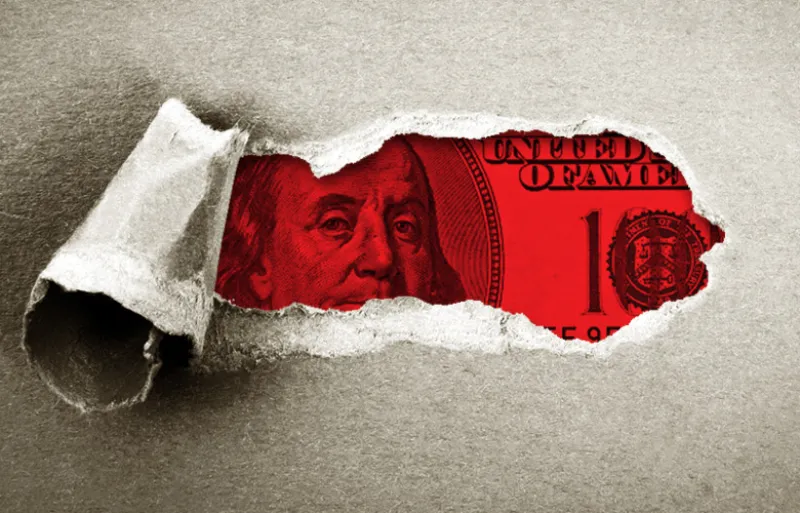As a fresh-faced businesss school graduate 18 years ago, I joined a boutique private equity firm. The firm raised its third fund, and the principals committed a sizable investment alongside a respected list of limited partners. I spent my first six months assisting on due diligence for the purchase of a metallized-paper company that manufactured shiny labels for beer bottles. When the firm closed the deal, I was surprised to learn that the principals had met their investment commitment by reinvesting a “deal fee” for consummating the transaction. Not a single dollar came out of their pockets.
It was the first time I discovered a hidden tax on private equity investors.
We are living in a golden age for private equity. A decade of strong returns in a benign economic environment and some hocus- pocus around the quality of those returns have made private equity the belle of the ball. Private equity strategies benefited from a forgiving interest rate environment and readily available financing at low cost and with loose covenants. Private equity firms also gave the appearance of a smooth return stream, owing to the infrequent marking of their positions. Quantitative-minded consultants often concluded that the risk-adjusted returns of private equity managers were even better than the absolute returns generated for investors.
In addition to a smooth run of late, private equity is a superior form of capitalism to public equity. Business owners can make long-term capital allocation decisions and implement operational change without short-term pressure on earnings, and allocators who make a single decision for a decade are handcuffed when it comes to reversing that decision at a moment of performance duress.
For the many benefits of private equity investing, the costs of the activity and the current market environment leave a lot to be desired. Established firms are in high demand — and as a result have dictated unfriendly terms for allocators. A typical private equity fund charges a 2 percent management fee and a 20 percent incentive fee. Making matters worse, standard practices evolved: The kind of chicanery that I witnessed just after business school was extended to incorporating deal fees (only some of which offset management fees), along with monitoring fees, consulting fees, transaction fees, and exit fees.
We’ve seen this story play out in the hedge fund industry; it doesn’t end well for investors. During the robust market environment of the 2000s, strong gross returns for hedge funds created insatiable demand. Investment capacity constraints caused competition for talent, and compensation for analysts rose, increasing the “cost of doing business.” As hedge funds captured share from traditional asset classes, the demand for their services appeared price-inelastic; annual management fees crept higher, from 1 percent to 1.5 percent to 2 percent. Allocators were price takers and accepted the deal because they believed the past success would continue indefinitely. They were wrong.
The market environment shifted after 2009; gross returns of hedge funds came down for an extended period. Most funds generated lower gross returns that could not support the high fee burden and still meet the expectations of their investors. Some allocators left the space entirely, others became price makers, and the entire industry shifted its focus to fees. When every penny mattered, allocators sharpened their pencils to seek a better deal.
Private equity firms now extracting their extra pound of flesh while the going is good will face serious scrutiny down the road. In a world rushing toward low-cost investing in the public markets, high-cost investing to access similar underlying businesses in the private markets stands out like a sore thumb.
The benign environment that drove strong private equity results is starting to change, and lower returns are likely to follow. Massive capital inflows chasing past success have increased competition for deals and elevated entry prices. A decade ago a middle-market company may have sold for 6x to 8x EBITDA; the same company might sell for twice that multiple today. Interest rate and economic cycles ebb and flow — even when governments interfere — and financial leverage is a killer in a downturn. Private equity firms will continue to benefit from key structural advantages in any environment, but the perfect backdrop will not last.
Private equity managers might want to consider the lessons learned by hedge fund managers and proactively improve the deal for their investors before they are forced to do so. Marrying a fair deal with a long-term horizon is a win-win waiting to happen.
The private equity cycle is much longer than that of hedge funds, and those firms’ day of reckoning is likely a long way off. Until then it seems as a good a time as any for a contrarian allocator to be cautious.
As for the firm I joined out of business school, its third fund struggled in the weak economic environment of the early 2000s, the partners split, and it never raised a fourth fund. I didn’t stay around long enough to find out if the investors knew about the hidden expenses, but I can’t imagine it would have helped the manager’s cause.







